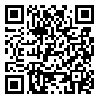BibTeX | RIS | EndNote | Medlars | ProCite | Reference Manager | RefWorks
Send citation to:
URL: http://jdisabilstud.org/article-1-540-en.html
2- Urmia Islamic Azad University
3- Islamic Azad University Science and Research Branch
Background & Objective: This study investigated behavioral disorders which are problematic for children, family, and community. These include behaviors which are inappropriate regarding age group and can be severe, chronic or continuous ranging from hyperactive and aggressive to dissociated behaviors. Most of them occur due to a person's disability in proper analysis of self and problem situations, lack of problem-solving skills to resolve life issues effectively, inappropriate usage of non-cognitive and emotional capacities. According to researches, some features of emotional intelligence in people with behavioral disorders are deficient. Emotional intelligence as a kind of social intelligence indicates a person's ability to encounter and cope with psychological and social stressors. Emotional intelligence is of significant influence on one's life since it involves the capacity of flexibility, problem-solving, dealing with stress and impulses. In cognitive-behavioral approach, treatment is targeted toward providing an opportunity for new adaptive learning. So, this study aims to investigate the effectiveness of cognitive – behavioral therapy (CBT) on the improvement of emotional intelligence of students with behavioral disorders.
Methods: This is a quasi-experimental research with pretest-posttest design and control group. The statistical population was all high school male students with behavioral disorders in Uremia city. A sample of 30 students of 13-15 was selected by random availability sampling method. They distributed randomly in experimental and control group. The criteria of engagement were: 1. Diagnosis of behavioral disorders according to Rotter's children behavioral disorder test, clinical evaluation, and interview, 2. Absence of visual and hearing impairments and lack of abnormal IQ (according to health profiles of students based on initial assessment), 3. Age of 13-15. After conducting pretest, the experimental group participated in 10 sessions of 90 minutes of cognitive behavioral education. Then posttest was done for both groups. Furthermore, due to ethical considerations, the control group received the same educational interventions, after completing the study and conducting posttest. To evaluate behavioral disorders Rotter's children behavioral disorder test and to evaluate emotional intelligence, Schutte's self-report emotional intelligence test (SSEIT) was used as pretest-posttest. The results were analyzed by analysis of covariance method. The interventions in treatment sessions are as below: First: educating structure of courses, building a ladder of current problems and measuring them by behavior thermometer; Second: educating automatic thoughts, the influence of negative thoughts and recording them in thought bulb papers; Third: educating types of cognitive distortions, the task of identifying cognitive distortions related to negative automatic thoughts; Fourth: educating cognitive evaluation, challenging thoughts (gathering evidence), balanced thinking and recording; Fifth: training primary believes, their development, identifying and testing them by thought detector; Sixth: educating negative thoughts management using distraction techniques, positive self – talk, thoughtful pause, reduction of tape sound; Seventh: educating emotions and emotional self-awareness, and the relation of emotions with behaviors and thoughts and record their intensity with a feeling thermometer; Eighth: training emotional control by muscle relaxation, quick relaxation, breath control, relaxing imaging setting; Ninth: educating behavioral modifications using behavior analysis techniques, regular desensitization, encounter, and self – rewarding; Tenth: educating problems of action without thinking, the dominance of feelings, disability in problem-solving; and, training problem-solving skills, practicing skills through mental imagery, and modeling.
Results: The results indicated that there is a significant difference between experiment and control groups both in general emotional intelligence and some of its features including optimism, emotional regulation, psychological evaluation, social skills, and sensitive application (p<0.05).
Conclusion: According to research findings one may conclude that cognitive behavior treatment is effective on enhancing emotional intelligence and its features among the students with behavioral disorders.
| Rights and permissions | |
 |
This work is licensed under a Creative Commons Attribution-NonCommercial 4.0 International License. |




